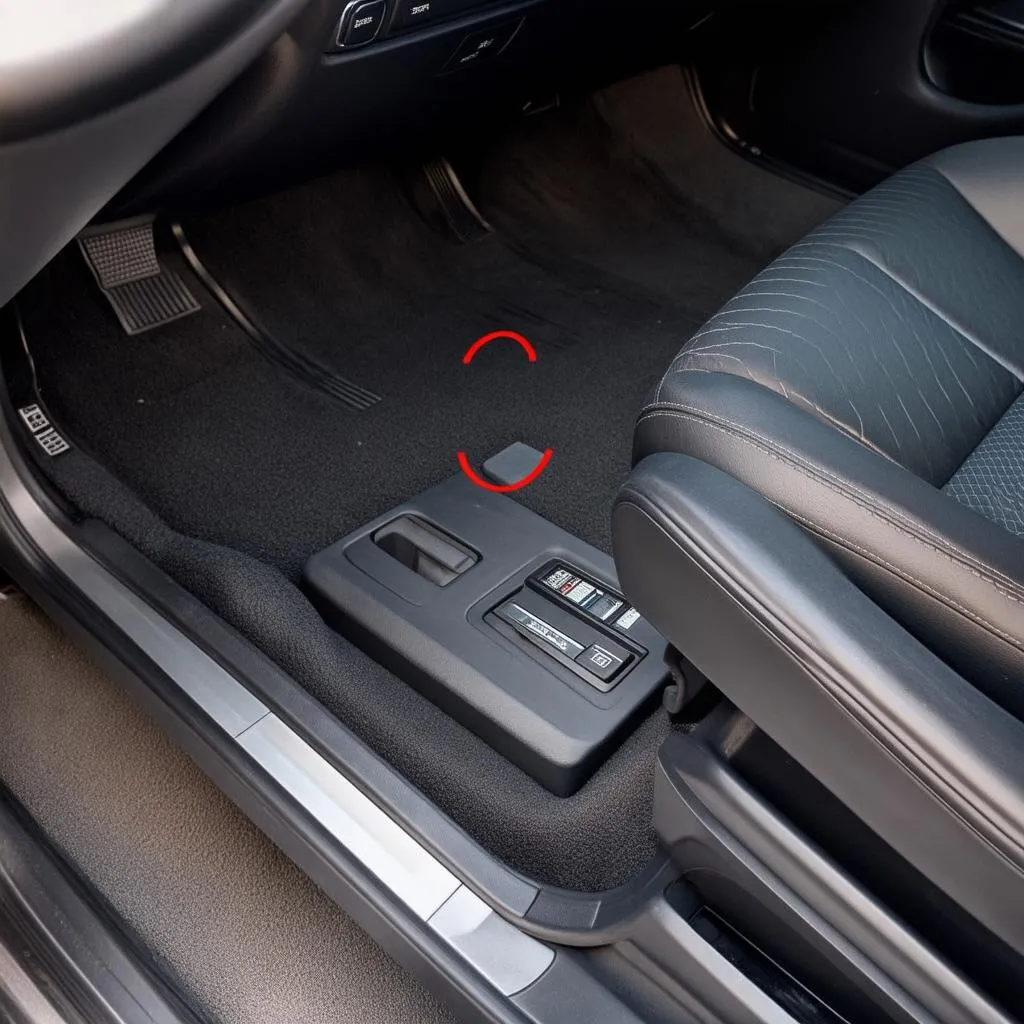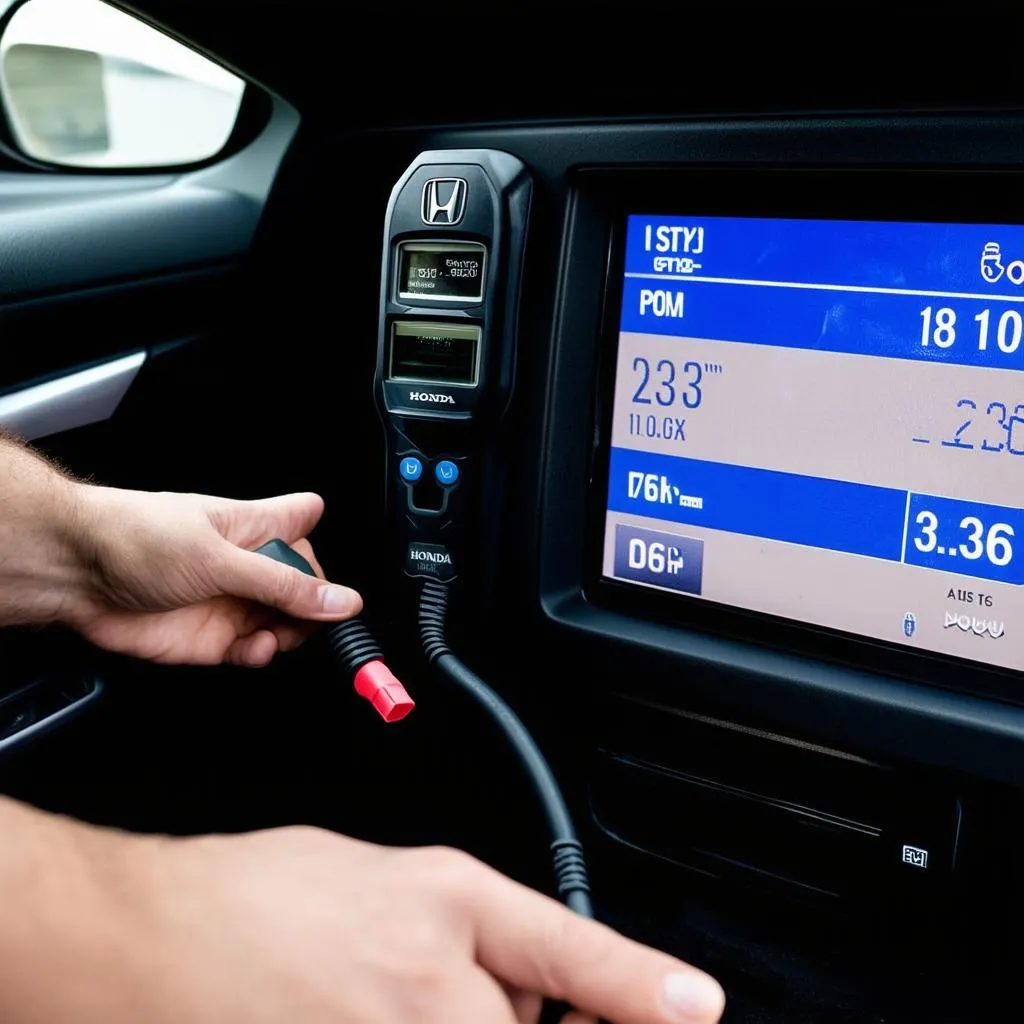Imagine this: you’re driving down the Pacific Coast Highway in your 2015 Honda Pilot, the California sun warming your face. Suddenly, a warning light flashes on your dashboard. Is it a minor glitch or something serious? Your mind races, wondering what could be wrong. This is where your Honda’s OBD port comes in, acting like a direct line to your car’s inner workings.
What Does the OBD Port Do?
Your Car’s Rosetta Stone
Think of the OBD port (On-Board Diagnostics) as your car’s own personal translator. Located under the driver’s side dashboard, this little port allows you, or a mechanic, to communicate directly with your Pilot’s computer system.
Why is it Important?
The OBD port allows you to:
- Read and clear diagnostic trouble codes (DTCs): Those pesky warning lights on your dashboard? The OBD port helps decipher those codes, giving you a better understanding of what needs attention.
- Monitor real-time data: See how your engine is performing, check fuel economy, and more.
- Program and configure certain modules: This might include things like key fobs or tire pressure sensors.
Where Exactly is the OBD Port on a 2015 Honda Pilot?
The OBD port on a 2015 Honda Pilot is typically located beneath the driver’s side dashboard, near the steering column. It’s usually covered by a small plastic panel that can be easily removed.
 2015 Honda Pilot Obd Port Location" width="1024" height="1024">2015 Honda Pilot OBD Port Location
2015 Honda Pilot Obd Port Location" width="1024" height="1024">2015 Honda Pilot OBD Port Location
Common Issues and Solutions
Problem: Can’t locate the OBD port.
Solution: Double-check the area beneath the dashboard. Sometimes the port can be tucked away behind a panel or a fuse box door. Consult your owner’s manual for a diagram.
Problem: The OBD scanner won’t connect.
Solution: Ensure the scanner is compatible with your Honda Pilot. Check the fuse for the OBD port in your fuse box. If the fuse is blown, replace it with a new one of the same amperage.
Frequently Asked Questions
Q: Can I use any OBD scanner on my Honda Pilot?
A: While many generic OBD-II scanners will work, it’s recommended to use a scanner specifically designed for Honda vehicles for the most accurate results.
Q: Is it safe to use an OBD scanner myself?
A: Yes, using an OBD scanner is generally safe. Just be sure to follow the instructions provided with your scanner.
Q: Can I reset my check engine light with an OBD scanner?
A: Yes, many scanners offer this function. However, keep in mind that this only clears the code and the light will return if the underlying issue is not addressed.
 Mechanic Using OBD Scanner
Mechanic Using OBD Scanner
Need Help? We’re Here For You!
Troubleshooting car issues can be frustrating. If you’re having difficulties understanding your 2015 Honda Pilot’s OBD system or need assistance with diagnostics, don’t hesitate to reach out to our team of experts via WhatsApp at +84767531508. We offer 24/7 support and are here to answer all your questions.
Keep Exploring
For more tips and guides on maintaining your Honda Pilot and other car-related topics, check out our other informative articles on Tech Car USA. Happy driving!